Mega Man X Legacy Collection (Nintendo Switch) Review
By Ninjaaa  30.12.2018
30.12.2018

The Mega Man X series is well renowned among gamers for its fast-paced platforming, rewarding secrets, killer soundtracks, and clever level design and bosses. It managed to net several main entries and a couple of spin-offs, but around 2004 everything came to a halt after the release of Mega Man X8. We haven't seen any new entries since then (although there was a collection in 2006 containing the first six entries), but despite that, Capcom has decided to put all eight main entries on modern consoles, splitting them into two halves with Mega Man X Legacy Collection and Mega Man X Legacy Collection 2, each with four games. Take a look at the first collection in this review, covering Mega Man X through Mega Man X4. The question is, do they still hold up?
Before the actual games are discussed, it's worth talking about the quality of the ports themselves first. There's a decent number of available settings, from choosing which regional version of each entry you'd like to play (although Mega Man X4's opening song from the original Japanese release is nowhere to be found here, even if the region is set to the Japanese version, no doubt due to licensing issues), various screen sizes, and even a new, easier difficulty setting called Rookie Hunter Mode. There's also a high-resolution filter that can be applied, but it unfortunately ends up putting this weird smear affect over the pixel art that causes the art to lose a lot of nuance, and the fact that it's the default option when playing is frankly unnecessary. Beyond that, though, the ports play fine, although it's worth noting that it does emulate the slowdown present in the original releases of each installment.
With that out of the way, it's time to move onto the games themselves, starting with the first entry, Mega Man X. As it is the beginning of the series, getting into it is simple; after finishing a short intro stage as the robot protagonist X, there will be eight levels that you can platform and shoot your way through in any order, each ending with a boss fight. Defeating a boss unlocks their weapon, which can be taken and used for the rest of the game, and these weapons also lead to an easier time fighting other bosses, since each boss is vulnerable to a specific one from a different fight. After finishing the regular eight stages, there will be a giant gauntlet that tests all your skills to finish things off.
What makes this so satisfying, along with its brilliant stage design that constantly keeps things fresh and unique with new mechanics, is how it controls. While the original Mega Man series offers fairly limited mobility, in the X series there's some shiny new moves to use, like being able to wall jump or unlock the ability to dash. Everything is slick, fluid, and exhilarating, as you're able to move about at such a quick pace that it feels incredible when pulling off tight maneuvers.
Although completing some stages may feel like a rough task at first, this has several upgrades scattered around, from maximum health boosts, to containers that can store extra health when HP refills are picked up while at max health, and special armor pieces that offer entirely new abilities, such as being able to charge up all weapons even further. Picking up new upgrades is important for newcomers, but it's still designed that you generally don't need to rely on them to succeed - in fact, one of the most important armor pieces, which unlocks the dash ability, isn't even required until a certain spot near the end, at which point you'll be forced to get the upgrade by then anyway. It can either be gotten from the first non-intro stage selected, or it can be put off until the very end instead, but the fact that both methods are valid options offers a sense of freedom that's respectful to the player.
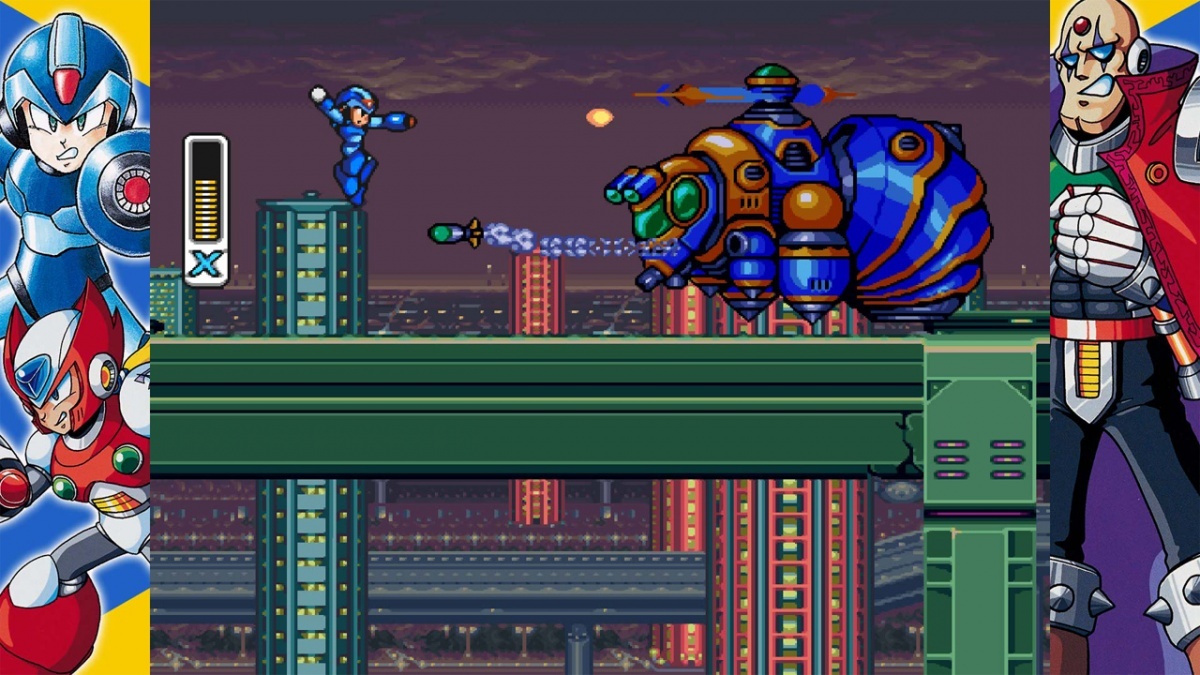
There's no such thing as a flawless game, but Mega Man X still stands out as one of the best platformers ever made. Every element of it is absolutely stellar, from the feverishly catchy soundtrack, the memorable environments and pixel art, the balanced difficulty curve, the addicting movement options, the distinct mechanics in each level, and the list goes on and on. It's something that gets even better with each playthrough, as advanced techniques and harder routes become more feasible to pull off. Mega Man X is truly a treasure, and is worth the price of both collections alone.
Next on the list is Mega Man X2, an installment that doesn't innovate a whole lot from the original, but that's perfectly okay, because similarly to X1, it has masterfully designed levels and bosses that are a joy to go through no matter how many times you've beaten the game. X2's main new addition is the X Hunters, a group of bosses that will teleport in and out of stages. Each stage has a hidden pathway, and if that path is taken while one of the X Hunters is in that level, a fight will be initiated with them.
You can't wait too long to go after them, however, since the more stages that are completed, the less stages they have the chance to show up in, since they will only appear in stages that haven't been finished yet, until eventually they'll stop showing up at all. There's an interesting reward for beating all of them, but it's ultimately inconsequential, and the real treat for going after the X Hunters is getting to play through some additional, great boss fights.
If there were to be any complaints about X2, it'd be that there's a few levels that aren't as strongly designed as they are in X1 .That's not to say that X2 has poor levels by any means, it's just that X1 was so well designed, standing out as one of the most solid platformers ever made, that it's hard to measure up to that caliber of design. Both are a blast to play through, it's just that whereas every part of X1 is a homerun, X2 has one or two levels that are slightly less enjoyable than the rest of the game, but still not by too much, thankfully. The only other thing X2 has going against it is that some of the secrets can be a bit too cryptic to feel rewarding, but there's only a small handful of instances that stand out when this is brought up, so it isn't too big of a deal anyway. All things considered, Mega Man X2 is still a spectacular platformer that, like with X1, never gets old.
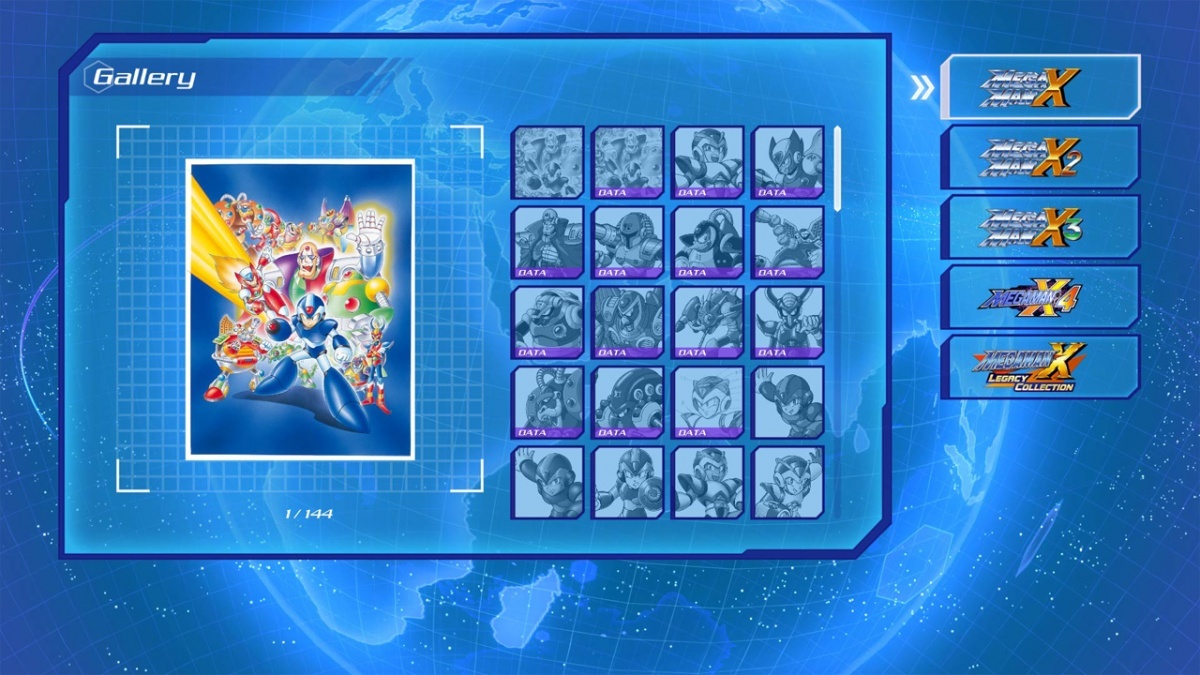
Then there's Mega Man X3, which has a noticeably different approach to its design. The core gameplay remains the same, but it's by far the hardest of the original trilogy as enemies are able to easily shred your health bar in just a few hits (especially during boss fights), and there are more enemies throughout stages than ever. To make up for this, though, there's now a larger focus on exploration, with new types of upgrades such as the ride armor keys (which give access to control over a powerful mech for certain portions of stages) and armor chips (a new, secondary type of armor which there are four of, but only one of them can be equipped). There's even an upgrade which gives a full map of each area and highlights the specific spot where collectibles are, so it's encouraged more than ever to grab as many items as possible. Although assistance is offered when searching for items, it's still recommended to use a guide if you intend to go for 100% completion.
This, combined with how a large number of items require certain prerequisites first (such as wielding a specific boss weapon, something the other entries also required but not as much as X3 does), gives an interesting emphasis on backtracking, yet it's handled in a way that's refreshing and offers a great sense of progression, where by the end of the adventure you'll be destroying bosses in two hits while pulling off wonderfully free-flowing aerial maneuvers. Enemy variety is a bit lacking this time around, and the boss fights can have patterns that are frankly too predictable, but the new things that X3 brings to the table makes up for this and causes it to be another well done, memorable entry, even if one that's definitely not for everyone due to its brutal difficulty.
As a side note, it's worth noting that unlike the Mega Man X Collection from 2006 which used the PS1 version of X3, Mega Man X Legacy Collection opts for the SNES version instead. The SNES version lacks the FMV cutscenes from the PS1 variant, and it also uses a different version of the soundtrack as well. These differences are minor and aren't a big deal in the long run, but it's worth pointing out regardless.
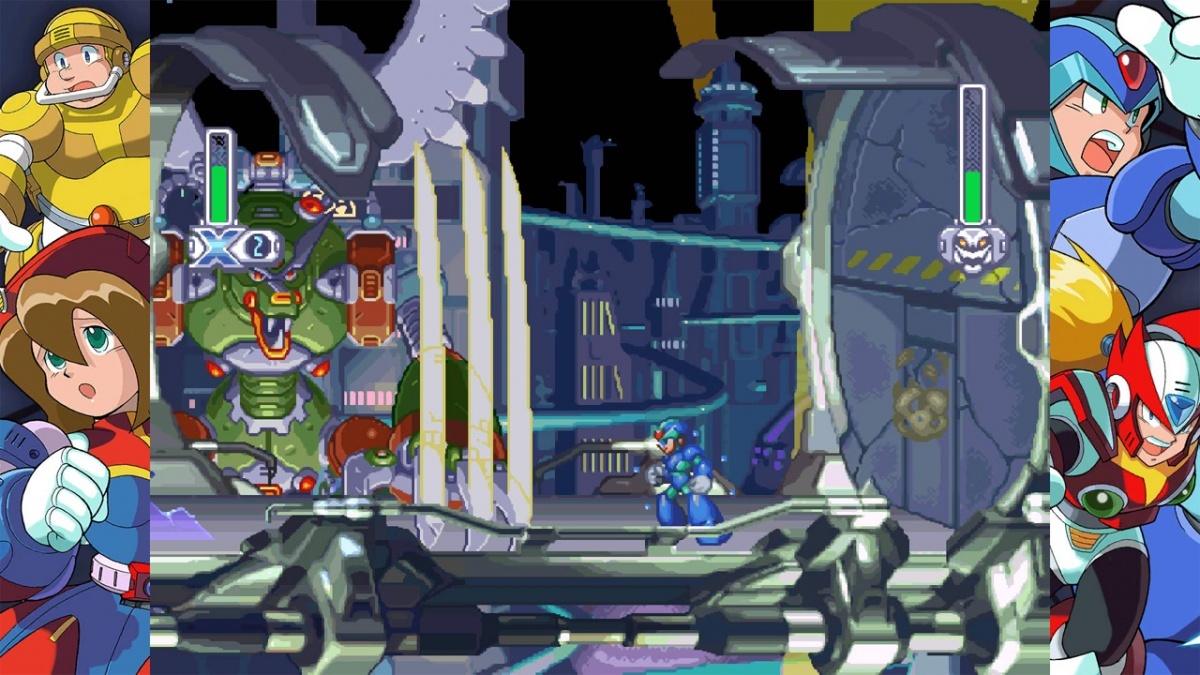
Last up on the collection is Mega Man X4, the first entry completely designed around the post-SNES generation of consoles. As such, the artwork has seen major upgrades and is far more detailed, and the backgrounds in particular look spectacular. Its presentation in general is a huge step up, and similarly to the PS1 version of X3, there's even a nice set of anime-style cut-scenes to go with this entry's more prominent narrative, this time with (admittedly infamous) full voice-acting.
The standout feature of X4 is that a fully fleshed-out version of fan favorite character Zero is now playable for the whole ride, unlike in X3 where he was basically a clone of X that could be used as a back-up when low on health. Here, he has his own unique set of melee combos, and gets permanent upgrades from boss fights that expand his arsenal, as opposed to getting ammo-dependent weapons like X does. X is still playable too, of course, having his own set of boss rewards as well, as new armor pieces to collect like usual.
While X4 may not be able to live up to something like X1, it's still a fantastic entry in its own right. Despite the fact that X and Zero go through the same areas (although they each have a few exclusive bosses and have their own cutscenes), experimenting with both characters make it feel like an entirely new experience due to how radically different each character plays. The stages have enough special mechanics to remain interesting without necessarily being too gimmicky, and the difficulty level is much more manageable than X3 while still remaining fairly challenging.
Mega Man X Legacy Collection also has a few other bonuses, and they're quite interesting ones, too. There's a gigantic index of promotional artwork, merchandise, and even commercials for the series - plus, a bunch of achievements added to each installment which task you doing missions that are sometimes simple (such as beating a final boss), while other times they can get a bit more complex (like finishing the intro stage of X2 at full health). It's not the biggest addition ever, but it is a nice way to squeeze a bit more replay value out of the experience.
There's also a new mode, called the X Challenge, which pits X (no playable Zero unfortunately) against two bosses at the same time, and if that sounds ridiculous, that's because it is. Many bosses in the series are tough enough even by themselves, and the mode picks some extremely devilish boss combinations to take on. Three out of nine boss weapons may be picked for each run (every "stage" is split into three sets of fights), which definitely helps, but it's still a monumental challenge regardless. Playing it on Easy difficulty is smooth sailing, but anything beyond that is near ridiculous, and there's even an unlockable Hard mode that cranks up the heat even higher. This part is truly meant for experts of the series, and the fact that there's even online leaderboards based on your performance adds even more replay value to it all.
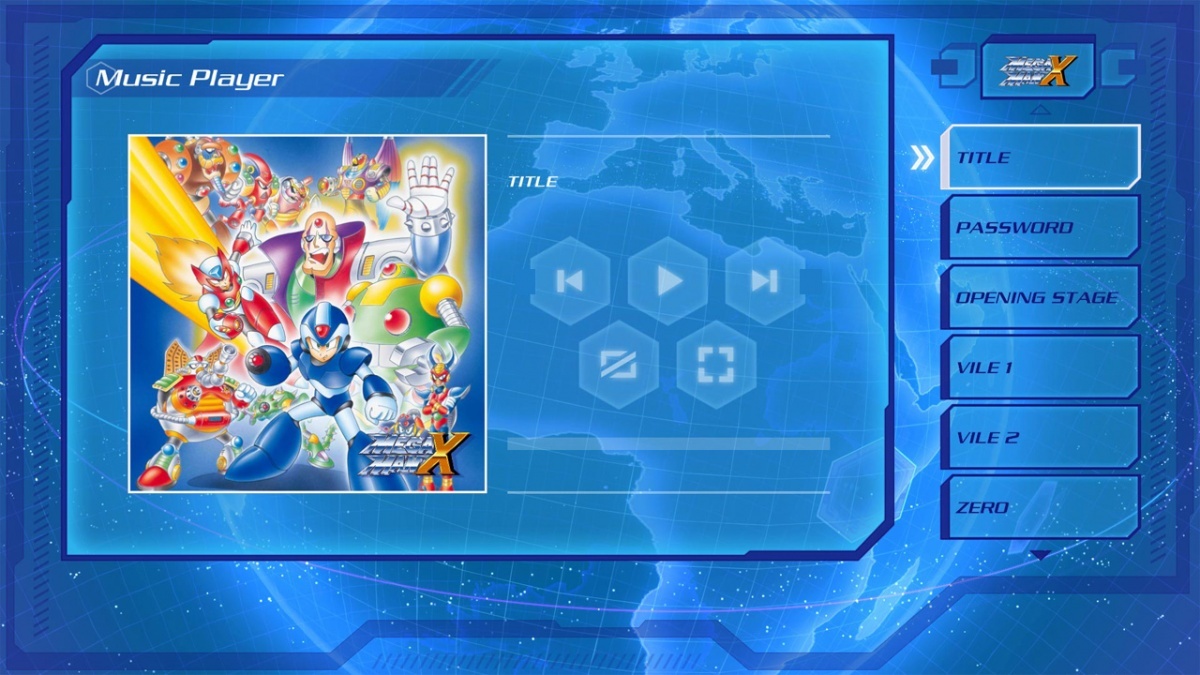
Cubed3 Rating
Exceptional - Gold Award

Mega Man X Legacy Collection offers four of the finest platformers ever made. They can only be described as timeless classics, especially the first entry which is one of the best platformers period. Newcomers will find this collection a great place to start thanks to the new Rookie Hunter mode, while veterans will appreciate the new challenges and bonus material on offer. If you're someone who gets even the slightest amount of enjoyment from platformers, buy this collection.
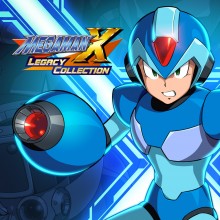
![]() 9/10
9/10
![]() 0
(0 Votes)
0
(0 Votes)
 Out now
Out now  Out now
Out now  Out now
Out now  Out now
Out now Comments
Comments are currently disabled

 Sign In
Sign In Game Details
Game Details Subscribe to this topic
Subscribe to this topic Features
Features





 Top
Top

